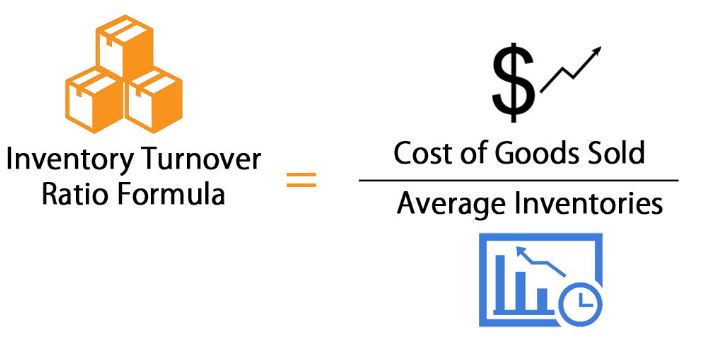Inventories can be referred to as goods during various stages of being prepared and results in a finished good. It includes finished products, the work-in-progress, the raw materials, and others. The following part of the write-up would take you through different types of inventories involved in different business and the costs involved with them.
What is Inventories?
Business inventories are maintained near the business place that is required for various purposes, depending on the demands of the business. If the customer is unable to get their demands meet from the business enterprise, they will look up for the items from other business inventories. In case the inventory is a manufacturer, they have to maintain raw materials and inventories of goods required to meet the work-in-progress phase. This would help to run the factory properly. In addition to this, the business should have some finished goods that would help to meet the demands of customers.
How can Rising Market Demand be dealt with by Inventory Stock?
With varying demand of the market, some firm may have to maintain a large stock of inventories. In case the firm is situated in a place where the product demand may rise and fall, It is important to maintain storage of items as a buffer that would be required to meet the sudden demand in the market. In case a supplier fails to provide his supply in time, the inventory would be of immense help to maintain the easy sale of products as per market requirement. This can also happen if the quality of the item delivered by a supplier is not up to the mark. The items stored in inventory would be a savior at that time. Maintaining good stock in inventory would help to deal with a situation such as sudden price hike in the market.
What are the Types of Inventories and Costs Involved?
- Raw Materials
These are among the vital inventory items that are required to produce items for any business. In this category, you can get either commodities or raw materials that you get from the market. Here, elements are included that the organization has to purchase from other sources other than the organization. Also, inventories that are partially accumulated products can also be categorized as a finished product to any supplier. However, the purchaser might consider it to be raw materials. Some raw materials are paper, wood, steel, grain, petroleum, grains, food items, and others. But when items like casters, seats, wheel, bolts, engines, and others are purchased from outside the firm, they will be considered as raw materials.
- Work-in-Progress
The items that are waiting to be processed or already processed can be termed as the ones included in work-in-progress. In addition, all items, parts of finished goods, assemblies, and subassemblies should also be included in this category of work-in-progress. This almost includes the one starting from raw materials, including the one that is ready for processing. Also, the one which awaits final inspection and can be categorized as finished goods is also included. However, any product with a parent product but not part of the raw materials should be included in items in the work-in-progress.
- Finished Products
As the name suggests, it is the final product that is ready to be sold in the market. This inventory is the stock of complete products that will be delivered to customers as per requirement. Moreover, the final goods are inspected ones before they are released in the market for sale. During the inspection, they are picked up from the work-in-progress part, and after inspection, they go into the finished goods inventory. However, this is the point from where it can be sold to consumers, retailers, wholesalers, given to distribution center and others. An item without any parent material should be considered as finished goods ready for sale.
What kind of Costs is Involved in Inventory?
At the time of purchasing inventory, it includes costs like the purchase price, excise, delivery costs, custom duties, and others. However, this cost does not include any discount that is given on the item. For any inventory, the cost involves production cost along with any extra cost that is required to make the item saleable such as packing charges and the like. If any time of delivery or handling the item, any unnecessary cost has been involved, it will not be included. Instead, only the normal cost would be included by cutting the rest of the cost. The valuation of the ending inventory is done using LIFO, AVCO, and other methods that also involves perpetual or periodic inventory system.
Detailed Study of Inventory Costs:
- Ordering Costs
This cost is also known by the name of the setup cost. This is incurred when you place an order from a supplier. Some of the costs involved in this category are clerical costs, cost of suppliers including expediting orders, transportation costs, receiving costs that include unloading cost of goods, the cost involved in electronic data interchange. There will be some amount of ordering cost irrespective of the size of the business enterprise. However, the ordering cost can spread out in case a bulk order has, and it would require a lot of time to be completed.
- Holding Costs
This is also known as carrying cost that comes from storing inventory before it is ready to be sold. Some of the including costs are opportunity cost, storage space cost, inventory service cost, including inventory risk costs.
- Shortage Costs
The shortage cost is also known by ‘stock out’ cost. It takes place when there items runs out of stock in the organization. This can take place due to reasons like disrupted production, customer reputation, emergency shipment, and others.
The Final Part:
The inventories are stored in stock by businesses that are either used in the form of finished goods or for using them in other goods or service in the business. It depends on one business enterprise to another. The categories of inventories also depend on the demand for inventories.

Krishna Murthy is the senior publisher at Trickyfinance. Krishna Murthy was one of the brilliant students during his college days. He completed his education in MBA (Master of Business Administration), and he is currently managing the all workload for sharing the best banking information over the internet. The main purpose of starting Tricky Finance is to provide all the precious information related to businesses and the banks to his readers.





